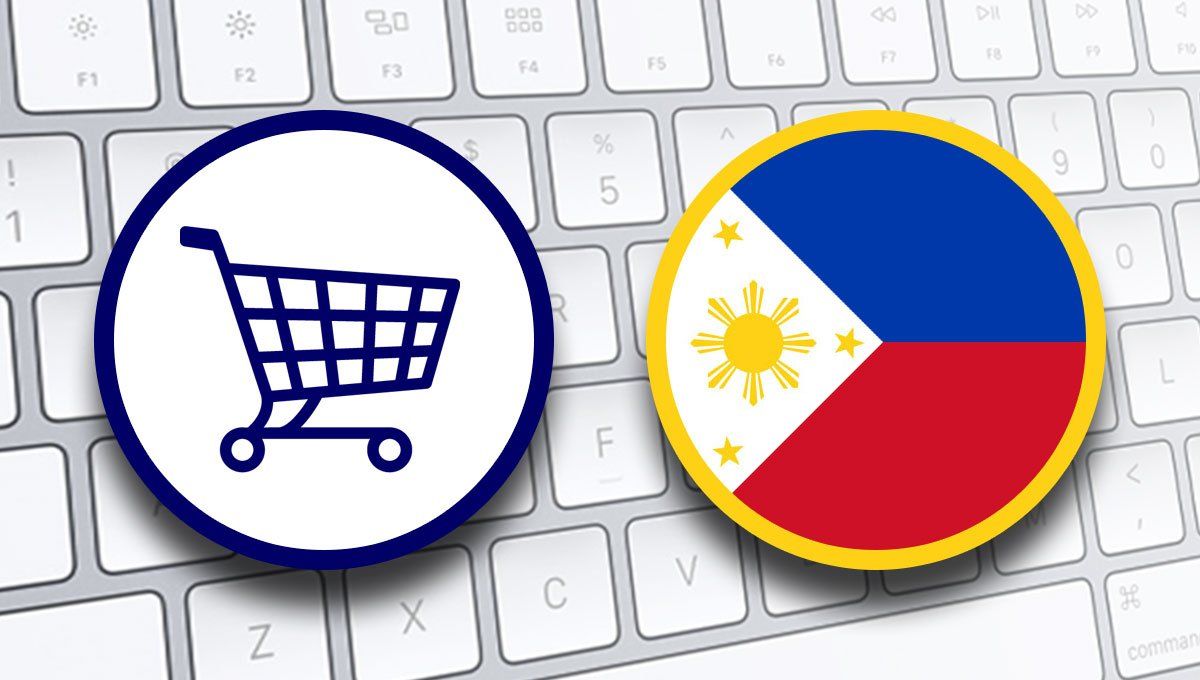Here's Why You Need to Start Selling in Lazada and Shopee
Sales by e-commerce increased dramatically last year due to the Covid-19 lockdowns here in the Philippines. But even before the pandemic, e-commerce is already a growing industry, highly powered by online shopping platforms. Compared to other western countries, the reach of e-commerce here is not yet as established. But like other countries in Southeast Asia, the Philippines is set to see massive growth in this industry within the coming years.
Two of the most popular and leading online shopping platforms are Lazada and Shopee. These two are now operating across different Southeast Asian countries, offering a wide range of products. Both platforms are aggressive in providing the best tools and features for sellers and consumers alike. In terms of market share, the two platforms are too close and somewhat similar; that's why it is encouraged to conduct business in both channels if possible.
The digital marketplace is large and increasing by the day. Besides websites, e-commerce is now broader than ever, with online shopping platforms like Lazada and Shopee plus social media as additional channels for entrepreneurs to start a business. In this article, we will go over the benefits of selling in Lazada and Shopee.
Why Should You Start Selling in Lazada?

Lazada finds its roots way back in 2012 when Maximilian Bittner initially owned it with the backing of
Rocket Internet. It was bought in 2016 by Jack Ma and now becomes the regional flagship of Alibaba Group. Lazada currently operates in six Southeast Asian Countries (Malaysia, Indonesia, Singapore, Thailand, Philippines, and Vietnam. It is a one-stop online shopping platform where consumers can find products ranging from fashion, health, electronics, food and beverage, sports even automobiles.
Lazada adapts the consumer-to-consumer (C2C) and business-to-consumer (B2C) hybrid model. This means the platform is where users directly buy and sell from other users, whereas Lazada also has the stock inventory of some products they can sell and ship directly from their fulfillment centers. For monthly visit statistics, Lazada tallied up to 39,407,700 visitors from September to December 2020.
As a leading e-commerce platform with high customer traffic, selling in Lazada is convenient for the seller. It offers easy to learn features you can fully utilize in managing your products up to the point where they receive their purchases. The platform fully supports its sellers by providing free resources found at Lazada University, they can learn in maximizing their business
Why Should You Start Selling in Shopee?

Founded in 2015 and operated as an online market in Singapore, Shopee now leads the race among e-commerce sites in Southeast Asia. It currently operates in Indonesia, Thailand, Malaysia, Taiwan, Vietnam, and the Philippines. Shopee started as a consumer-to-consumer (C2C) platform but now adapts the same hybrid model as Lazada. You can sell many product categories in Shopee, varying from electronics to home & living, fitness equipment, health & beauty, party needs, fashion, and toys. The rapid growth of Shopee attributes to its tailored per region type of marketing and operating where it resonates directly with the market's culture. For their traffic statistics, Shopee recorded monthly visitors of 51,898,300 within the last quarter of 2020. Shopee will only grow more significantly in the coming years as the e-commerce industry is set to be one of the economic drivers of most Southeast Asian Countries.
Lazada and Shopee Have Multiple Benefits Than Traditional Commerce
The eCommerce industry is becoming mainstream. As entrepreneurs, it is important to penetrate the online market to reach our businesses' full potential. Here are the reasons why eCommerce evolves better than traditional commerce.

Guaranteed Customers with Growing Daily Traffic
Shopee and Lazada are available to all people who have access to an internet connection. With active monthly visits at an average of 35 million, imagine how many customers you can reach through these two platforms. Compared to starting your website where you need to start from scratch, Shopee And Lazada already have a steady customer base who are intently searching for products they need or desire to purchase. With their active marketing campaigns, businesses who engage in these platforms ensure that many people are added to the customer base every day who can be potential buyers.
Starting your Online Store Entails Reduced Costs
Doing your business online steers away from the expenses of building a physical store which is costlier. Through Shopee and Lazada, you can create an online store where registration is free. Charges will only apply to transaction fees and other service fees. With the platforms' automated features and easy-to-follow guide for managing your products, you don't need to hire many employees. Online businesses also save a lot through marketing with social media as the main channel for advertising, and they can also opt for cost-effective advertising through Google.

Your Business Can Reach a Myriad of Customers Anytime, Anywhere
When your business is online, it is open 24/7 to millions of people. This means that even if you are not awake, many users are still searching for a product that you might be offering, leading to them buying and your business gaining sales. Customers don't need to travel to visit your store because it is accessible wherever they may be.
In addition, with all product information, reviews, images, price, and shipping costs already indicated there, even if you are not online, possible customers already got the answers they need to help them decide on purchasing. Or, if not, automated messages that you can set up will answer their questions for you.
Different Payment Options Favors Customers
Shopee and Lazada layout different payment options like cash-on-delivery (COD), local e-wallets, online banking, over-the-counter bank transfers, remittance centers, debit/credit cards, Lazada, and Shopee wallet. Unlike other countries that mostly require credit cards, these alternative payment options make it easier to target older generations where paying cash is still the primary option. For younger generations who are more into cashless transactions, the convenience of doing everything in just one seating encourages them to shop online.

Easy Communication Channels with Consumers
Lazada and Shopee provide accessible communication channels for customer concerns, reviews, complaints, requests, and other inquiries between the seller and consumer. Through these reviews and comments, the seller can gain the buyer's trust, leading to more sales. Customer concerns or complaints are easily mitigated through the platform's customer service or directly addressed to the seller. Inquiry about products and even special requests from consumers helps the seller analyze the customers' needs and demands, leading to an alignment of his products and services.
Built-in tools Make Business Analytics Simple
Integrated analytics provided by the two platforms gives the seller essential data of what products sell well and how many customers view their products. This built-in features aids in the business plan, inventory tracking, and management of cash flows.
Apart from these, sellers have access to a treasure trove of customer data important in market targeting. Compared to traditional retail, online sellers can optimize their consumers' online shopping experience as they understand consumer behavior and demographics better.
Through customer data insights, sellers can also send e-vouchers, discounts, pings, teasers for customers who have either liked, purchased, or viewed their store.

Uncomplicated Upgrading of Business
Expanding your online business requires less effort and money than traditional physical stores, where expansion means building a structure. Not only does this require more cost but labor too. Whereas scaling your business up in an online setting means adding new product inventory, making ads better and visible, or just adding small space for storing your inventory.
Optimized for Mobile Phones
Philippine internet usage is done mostly through smart mobile phones rather than using a desktop or laptop. About 89 percent of adult Filipinos use mobile phones of any type, given how less expensive it is and the available internet mobile data options. Given this information, where you sell your product must be optimized for mobile users. This requires simple navigation and less mobile data consumption. Lazada and Shopee are both mobile-optimized and easily accessed as applications consumers can download from Apple and Play Store.
Positive Outlook for E-commerce in The Philippines
E-commerce in the Philippines years ago painted a different picture. Many Filipinos have been hesitant to purchase online for reasons that involve identity theft, distrust in not seeing the actual product, and lack of payment options. The restrictions brought by the pandemic propelled consumers to transact online for their essential needs. This paved the way for the growth of the e-commerce industry in full throttle. As Filipinos are becoming comfortable and recognizing online shopping's convenience, the future of e-commerce in the Philippines looks bright.
If we are looking at statistics on how big the potential market of e-commerce in the Philippines is, it is massive given how many internet users are here. We rank second in Southeast Asia with about 76 million active internet users, spending about 9-10 hrs online daily, mostly on browsing social media. As a business, social media is one outlet where we can tap and integrate our marketing strategies in reaching out to our target market.
Current market trends suggest that about 90% of Filipino consumers use the internet to search for goods and services to buy, and about 76% fulfilled the transaction. With growing numbers of e-consumers, it is projected that by 2025, around $12 billion will come from online sales.

Government Initiatives for E-Commerce Industry
The Philippine government's increasing support for the eCommerce industry will also take it to
a higher level. The Department of Trade and Industry (DTI) roadmap includes initiatives to make eCommerce part of the main sectors that can increase the Philippines' GDP. The roadmap comprises improvements on innovation, infrastructure, and investments in totality-making support systems that will enhance the e-commerce industry.
Ease of Shipping Logistics
Lazada and Shopee invest in enhancing their logistics efficiency through partnerships with delivery or shipping providers such as Ninjavan, J & T, etc. Moving forward, there are possibilities that more in-house logistics will be adapted here in the Philippines like they do in other Southeast Asian neighbors.
Lazada already started in-house logistics as they opened several warehouses throughout the Philippines for faster shipping. The biggest fulfillment center in Southeast Asia, 54,000 sqm in total, owned by Lazada, can store about 5 million items. Upon completing national expressway linkages, the shipping time will be faster, especially here in Luzon.
E-commerce Post Pandemic
Since pandemic accelerated eCommerce growth in the Philippines, the question now is how will the situation be once everything comes back to normal. Experts claim that online shopping will continually grow post-pandemic. According to a Global Web survey, about 48% of Filipinos will still shop online after the pandemic. People already realized the convenience and wide range of products found online compared to brick-and-mortar stores. With more enhancements on the way for e-commerce platforms, expect that market penetration for online shopping will be higher.
Start Your E-commerce Business Now
In today's digital world, the power of the internet reaches new heights in commerce. From the benefits we derived from selling through online platforms like Lazada and Shopee, your business has greater potential to expand and connect to more customers. As sellers, we must utilize channels where our business can develop fully. Moving forward with selling online is an excellent move for entrepreneurs. So, what are you waiting for? It's time to build your e-commerce store now.
You can also send us an email at hello@agencylokal.ph.
Sign up to our newsletter
We will get back to you as soon as possible
Please try again later
De Jesus Oval, Bonifacio Global City, 1630, Taguig City, Philippines
Email: hello@agencylokal.ph
www.agencylokal.ph
LOKAL provides boutique business solutions for small businesses in Australia and the Philippines. With decades of experience,
LOKAL
provides search engine optimisation, digital marketing, digital public relations, executive recruitment, and outsourced team operations.




